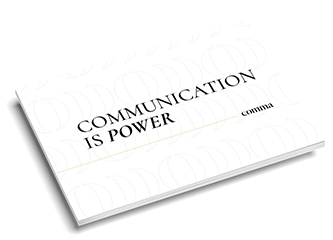Life goes by, society transforms… and things change. And, when everything changes, the best strategy is resilience and learning. Renew or die. Yes, also in communication and its tools, starting with press conferences.
First of all, in order to understand why change is necessary, we must bear in mind the importance of communication in society: it is, no more and no less, what makes it possible for them to see one of their fundamental rights fulfilled: the right to information. And that is why it has to be, if not a pioneer, one of the first to show flexibility, innovation and adaptability in order to offer at all times the information that citizens demand.
In this way, different forms and formats of press releases, press releases, interviews, reports, articles and, the queen of them all: press conferences, have come down to our days. The purpose and objectives of all of them have been changing, but these meetings with journalists have always been the most sensitive, key and important point for companies and institutions. That is the only thing that has not changed.
Press conferences: a little history
Thus, press conferences have followed a path that has gone through markedly institutional, propagandistic, informative and commercial periods, and now it seems that everything seems to come together. There are times when, in fact, the real objective of the call is confused because it is ‘covered’ with one that is, a priori, more striking.
But this confusion has always been played upon. As early as the beginning of the 20th century, Ivy Lee called a press conference at the very spot where two trains of the Pennsylvania Railroad company for which she worked had collided. In this way, Lee prevented a tragic accident from becoming the company’s Achilles’ heel and turned it into its strong point, a true display of transparency whereby he provided journalists with all the information they required on the spot. Information, yellow journalism or both?
Be that as it may, with that press conference, Lee was laying the groundwork for free information and, without realizing it, was giving a master class in crisis management.
How have press conferences changed?
A century later, communication became highly commercial and, as a result, press conferences would come to be dominated by product presentations and the launching of new services. But only a few, among the hundreds that are held daily, stand out above the rest. Thus, in 2007, we find one of the most historic: Steve Jobs starred in the unveiling of the first iPhone. This press conference would mark a turning point, not only in the technology sector, but also in society by turning this mobile device into a true symbol of capitalism and consumerism. Jobs showed the first images of the device at 9.41am and, since then, that is the exact time the iPhone is unveiled at each presentation;
But press conferences must not only adapt their content to the new times, but also their format and how to present it to the press; Exceptional situations such as the one we experienced in 2020 caused face-to-face presence shares the throne with the virtual world. Who said it wasn’t possible?
Over the years we have witnessed the first telematic press conferences, which have now given way to hybrid models where journalists, spokespersons and public relations people can enjoy all kinds of press conferences from wherever they want, which has made us realise the opportunities that lie ahead. To do this, it is key to be clear about 5 things:
Differentiate the objective of your press conference;
It is not the same to summon the press for commercial purposes to present a new product than to summon them to communicate a corporate change or to analyse with them the current news; In fact, in times like these, journalists’ interest is more focused on the latter, so be sure to assess whether the content of the press conference is attractive enough to attract journalists; Otherwise, use other tools; Journalists will thank you;
Keep track of dates
If the press conference is feasible, keep track of important dates and other possible press conferences in the same sector so that your press conference does not coincide with any of them and, therefore, (tele)attendance and interest are higher;
Choose the format that best suits your needs
It can be telematic, face-to-face or hybrid; If it is telematic or hybrid, assess whether you are going to need to share a screen to make it easier for tele-attendees to see the content, whether you want them to see each other or only the press conference spokespersons, whether you want to set up a channel for questions, etc. In the case of an in-person event, make sure that the chosen location meets the logistical, seating and catering requirements you need;
Prepare the agenda, timetable and the interventions of the spokespersons
Both in terms of content (through the arguments and Q&A) and non-verbal language, making sure that all of this is framed within the stipulated time (ideally no more than 60 minutes), and reflect this very well in thebriefing that you need to prepare.
Anticipate possible unforeseen events at the press conference
Make a list of all the probable ones you can think of (there can always be one that you haven’t thought of) and prepare a solution to anticipate each one of them or, if that is not possible, solve them as soon as possible if they do arise: failures with the Internet network, sound coupling, room with a smaller (or larger) capacity than that of the final attendees, controversial/delicate issues in the journalists’ round of questions…
A good example of the latter is in the press conference given on 5 September 2022 by Christophe Galtier, Paris Saint-Germain football coach, and Kylian Mbappé, Paris Saint-Germain player, who were asked about the possibility of the French team travelling by train (instead of by plane) to cities near the French capital to protect the environment, they responded with laughter and irony, showing zero sensitivity to the fight against climate change and a totally disrespectful attitude towards the journalist who asked the question;
This caused a great stir in French society and its institutions, and put the team under the spotlight for totally unfortunate statements on a subject which, apparently and falsely, had nothing to do with the activity of a football team; What is clear is that time is passing and the press conferences remain the most sensitive time for an entity’s public appearance.
Improvising is forbidden at a press conference;
Preparing for them requires a great deal of work beforehand; Contextualisation; preparation of possible questions and their answers; preparation of spokespersons– tboth in terms of content and non-verbal communication -; taking care of off de records, etc.
It is the moment of public exposure from which it is necessary to emerge, at the very least, successful, but it is better if it is done triumphantly and, to do so, no aspect of your press conferences should be left to chance however unlikely you think it is to happen or however controlled you think they are; Otherwise, you could find yourself in a reputation crisis like Paris Saint-Germain;






